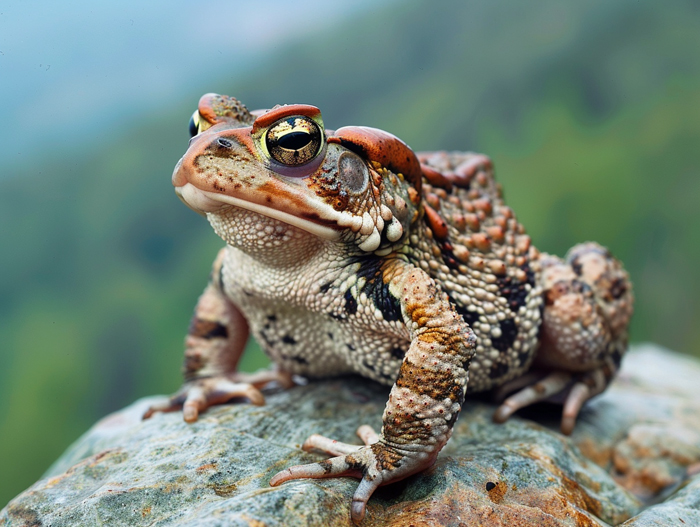Have you ever wondered why toads have warts? These bumpy creatures often leave us curious about the purpose of those peculiar skin growths. In this text, we’ll investigate into the intriguing area of toads and uncover the mystery behind their warts.
Toads’ warts are not just random bumps on their skin – they serve a crucial purpose in their survival. Understanding the reasons behind these warts can provide valuable insights into the evolutionary adaptations of these amphibians. Let’s explore the science behind toads’ warts and how they contribute to their overall well-being.
Join us on a captivating journey as we unravel the secrets of why toads have warts. By the end of this article, you’ll have a newfound appreciation for these unique creatures and their remarkable adaptations. Let’s jump into the world of toads and discover the hidden significance of their distinctive skin features.
Key Takeaways
- Toads’ warts are not random bumps but serve a crucial purpose in their survival, acting as a shield against predators and aiding in camouflage.
- Warts play a role in attracting mates through the release of pheromones and species recognition based on unique wart patterns.
- The formation of toad warts involves the secretion of toxins from specialized skin glands and the interaction with bacteria, all influenced by environmental conditions.
- Toad warts are not contagious to humans, and the toxins released are for defense mechanisms, dispelling misconceptions about their poisonous nature.
Reasons Behind Toads Having Warts

What Are Warts on Toads?
- Warts: Raised bumps on the skin
- Glands: Secretions from specialized skin glands that create warts
- Texture: Rough and bumpy surface due to warts
Natural Defense Mechanism
- Protection: Warts act as a shield against predators
- Camouflage: Blend with surroundings for enhanced protection
- Warning Signs: Bright colors on warts warn predators of their toxicity
- Attracting Mates: Warts play a role in attracting potential partners
- Pheromones: Warts release pheromones for communication during mating season
- Species Recognition: Unique wart patterns help identify individuals for mating
Wart Formation Process
Warts on toads are formed through a fascinating process involving various factors. Understanding how these warts develop sheds light on their functions and significance in toad biology.

Secretion of Toxins
- Toad warts form due to secretions of toxins from specialized skin glands.
- These toxins contribute to the formation of the raised bumps that characterize toad warts.
- The secretion of toxins is a crucial step in the development of these unique skin features.
Interaction with Bacteria
- Bacteria play a role in the formation of toad warts.
- The interaction between the toxins and bacteria on the toad’s skin contributes to the growth and texture of the warts.
- This symbiotic relationship between toxins and bacteria is essential for the development of warts on toads.
- Environmental conditions can influence the formation of toad warts.
- Factors such as humidity, temperature, and habitat play a role in determining the size and appearance of the warts.
- Understanding how environmental factors impact wart formation provides insights into the adaptability of toads to their surroundings.
Understanding the wart formation process in toads reveals the intricate mechanisms at play in their development. Each step in this process contributes to the unique characteristics and functions of toad warts.
Common Misconceptions about Toad Warts

Contagiousness
- Toad warts are not contagious; they stem from the toad’s skin glands, rather than being a transmissible condition.
- Direct contact with toads does not lead to warts or any skin issues in humans.
- The bumps on a toad’s skin are specifically tailored to meet the toad’s needs, unrelated to human health worries.
Myth of Toad Poison
- Toads with warts are not inherently poisonous, even though the common belief.
- The toxins released by toads are for defense mechanisms, not for causing warts.
- Warts serve a different purpose compared to the dangerous toxins that some toads secrete.
- Interacting with toads, even those with warts, does not pose health risks for humans.
- Warts on toads are a natural element of their biology and do not signify an infectious threat.
- It’s important to dispel misconceptions to appreciate toads and their unique adaptations fully.
Conclusion
Understanding the truth behind toad warts is essential for appreciating these fascinating creatures. Debunking common myths about toad warts clarifies that they are not harmful to humans and are simply a natural part of the toad’s biology. By knowing that toad warts originate from their skin glands and are not contagious, you can observe these amphibians with a newfound appreciation. Remember, toads with warts are not poisonous; their toxins serve as a defense mechanism. Embracing these facts enhances your understanding and respect for toads and their remarkable adaptations.

Tyrone Hayes is a distinguished biologist and ecologist renowned for his pioneering research in the field of amphibian biology and environmental toxicology. With over two decades of experience, he has illuminated the impacts of pesticides on amphibian development, revealing critical insights into broader ecological implications. Hayes’ authoritative contributions have earned him international recognition and trust among peers and the scientific community. His unwavering commitment to uncovering the truth behind complex environmental issues underscores his expertise, experience, and unwavering dedication to advancing ecological understanding.
